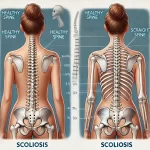
Prostate cancer is a prevalent form of cancer that affects the prostate gland, a small, walnut-sized gland located just below the bladder in men. This gland produces seminal fluid, which nourishes and transports sperm. While prostate cancer typically progresses slowly and remains confined to the prostate gland, it can be aggressive and spread rapidly to other parts of the body. Understanding the symptoms, causes, risk factors, complications, prevention strategies, and treatment options is crucial for managing prostate cancer effectively.
Prostate cancer may not cause any symptoms in its early stages. As the cancer progresses, some men may experience:
Urinary Symptoms: Difficulty urinating, weak urine flow, frequent urination (especially at night), or the sensation of not emptying the bladder completely.
Blood in Urine or Semen: Presence of blood in urine (hematuria) or semen (hematospermia).
Erectile Dysfunction: Difficulty achieving or maintaining an erection.
Pain: Discomfort in the pelvic area, lower back, hips, or thighs.
Bone Pain: Advanced prostate cancer can spread to bones, causing pain and fractures.
It is essential to consult a doctor if you experience any persistent symptoms related to urination, sexual function, or unexplained pain. While these symptoms may not necessarily indicate prostate cancer, they warrant medical evaluation to rule out any underlying issues, including prostate cancer or other prostate conditions like benign prostatic hyperplasia (BPH).
The exact cause of prostate cancer remains unclear, but several factors may contribute to its development, including:
Genetic Factors: Men with a family history of prostate cancer are at higher risk.
Age: Prostate cancer is more common in older men, with the risk increasing significantly after age 50.
Ethnicity: African-American men have a higher risk of developing prostate cancer and are more likely to experience aggressive forms of the disease.
Dietary Factors: High intake of red meat and dairy products, as well as a diet low in fruits and vegetables, may increase the risk of prostate cancer.
Lifestyle Factors: Sedentary lifestyle, obesity, and smoking may contribute to the development of prostate cancer.
Several risk factors can increase the likelihood of developing prostate cancer:
Age: Prostate cancer risk increases with age, particularly after age 50.
Family History: Men with close relatives (father, brother) who have had prostate cancer are at higher risk.
Race: African-American men have a higher risk of developing prostate cancer and are more likely to have an aggressive form of the disease.
Obesity: Being overweight or obese may increase the risk of developing aggressive prostate cancer.
Genetics: Certain inherited gene mutations, such as BRCA1 and BRCA2, may increase the risk of prostate cancer.
Prostate cancer and its treatment can lead to various complications, including:
Spread of Cancer: Prostate cancer can spread (metastasize) to other parts of the body, such as bones, lymph nodes, or other organs.
Urinary Problems: Treatment may cause urinary incontinence, erectile dysfunction, or other urinary issues.
Bowel Problems: Radiation therapy or surgery can lead to bowel problems, including diarrhea, rectal bleeding, or inflammation.
Emotional and Psychological Effects: Coping with a prostate cancer diagnosis and its treatment may cause anxiety, depression, or stress for patients and their families.
While it may not be possible to prevent prostate cancer entirely, certain lifestyle modifications may help reduce the risk:
Healthy Diet: Emphasize a diet rich in fruits, vegetables, and whole grains while limiting red meat and high-fat dairy products.
Regular Exercise: Engage in regular physical activity, such as brisk walking, swimming, or cycling, to maintain a healthy weight and reduce the risk of prostate cancer.
Maintain a Healthy Weight: Avoid obesity by maintaining a healthy weight through a balanced diet and regular exercise.
Screening: Discuss prostate cancer screening options with your doctor, particularly if you have risk factors such as family history or African-American ethnicity. Screening tests may include a prostate-specific antigen (PSA) blood test and digital rectal exam (DRE).
Limit Alcohol and Tobacco: Reduce alcohol consumption and avoid smoking, as these habits may increase the risk of developing aggressive prostate cancer.
Treatment options for prostate cancer depend on various factors, including the stage of cancer, the aggressiveness of the tumor, and the patient’s overall health. Treatment modalities may include:
Active Surveillance: For low-risk prostate cancer, particularly in older men, active surveillance involves closely monitoring the cancer’s progression without immediate treatment.
Surgery: Radical prostatectomy involves surgical removal of the prostate gland and surrounding tissues. It may be recommended for localized prostate cancer.
Radiation Therapy: External beam radiation therapy or brachytherapy involves using high-energy rays to target and kill cancer cells in the prostate.
Hormone Therapy: Also known as androgen deprivation therapy, hormone therapy aims to suppress testosterone levels, which fuel the growth of prostate cancer cells.
Chemotherapy: Chemotherapy drugs may be used to treat advanced or metastatic prostate cancer that does not respond to hormone therapy.
Immunotherapy: Immunotherapy drugs, such as sipuleucel-T, stimulate the immune system to target and destroy prostate cancer cells.
Prostate cancer is a significant health concern for men worldwide, but early detection and advances in treatment have improved outcomes for many patients. Understanding the symptoms, risk factors, and available treatment options is crucial for managing prostate cancer effectively. By adopting a healthy lifestyle, undergoing regular screening, and seeking timely medical care, men can reduce their risk of developing prostate cancer and improve their chances of successful treatment and recovery. If you experience any symptoms or have concerns about prostate cancer, consult a healthcare professional for evaluation and personalized recommendations.
Indian Health Adviser (IHA) is a healthcare facilitator seeking to make health and wellness easier for people of international residents, their families, and their friends.
Designed by Acmeinfolabs